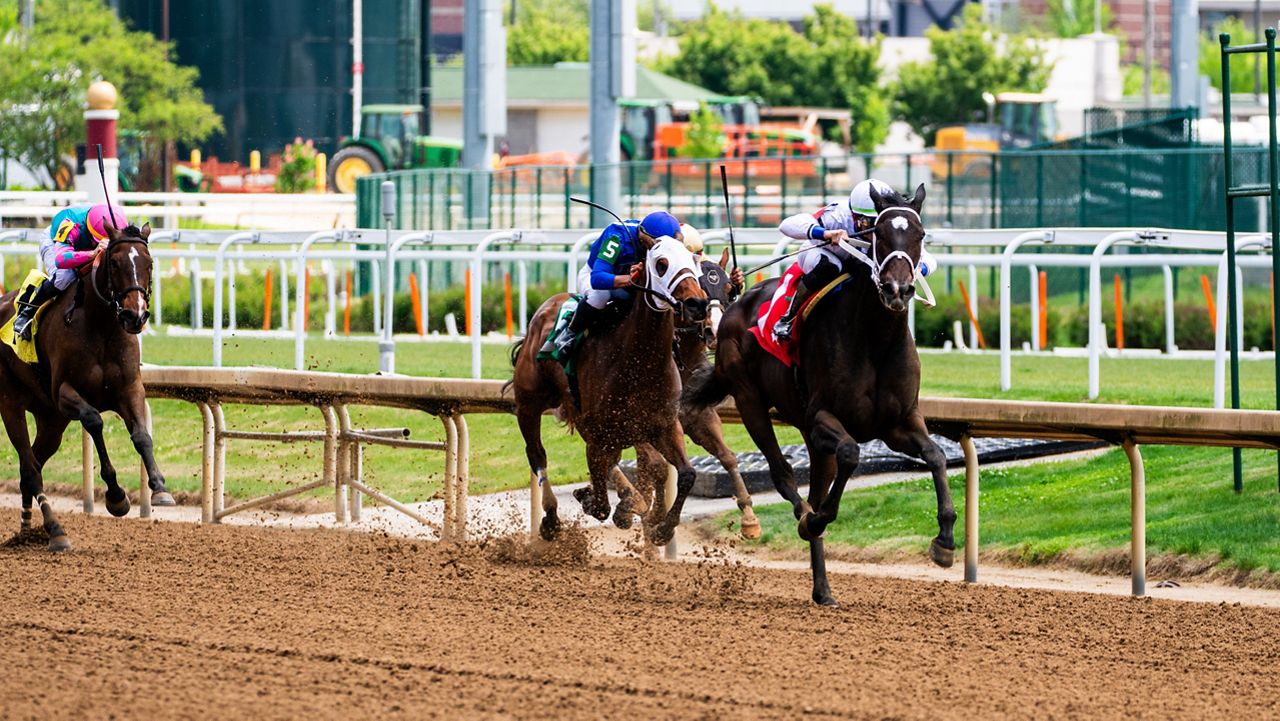LOUISVILLE, Ky. — Memories are made at the Kentucky Derby, most of them good. Whether cashing a winning ticket, sipping mint juleps or marveling at the horses, crowds pack Churchill Downs to experience a bucket list sporting event.
Many left last year in tears, anger and questioning the safety of the sport after 12 horses died at the historic track in the days surrounding the race, including two on Derby day when racing enjoys its biggest attendance and highest TV ratings of the year.
“You can’t ever be too safe when it comes to our sport,” two-time Derby-winning jockey Mike Smith said.
Deaths occurred at other major racing venues last year, too, in what become a tragic theme for the sport.
The number of deaths in the United States increased slightly in 2023 from the year before, according to data tracked by the Equine Injury Database and reported by HISA. HISA said there were 1.32 deaths per 1,000 starts last year, up from 1.25 the previous year. The number at the 50 HISA-accredited tracks was 1.23 per 1,000, compared with 1.63 at others across the country.
“We’re encouraged by that progress,” said Lisa Lazarus, CEO of HISA, “but we certainly have a whole lot more work to do.”
A review of 14 horse deaths at Saratoga in upstate New York last summer found no definitive cause for why they happened, although heavy rainfall could have contributed.
Investigations by Churchill Downs and the Horseracing Integrity and Safety Act (HISA) — the sport’s new governing body — didn’t identify one common cause for the deaths around the Derby.
“When we say that there’s not one singular factor that caused the breakdowns, it doesn’t mean that we don’t know what the risk factors are that contribute to breakdowns,” Lazarus said. “Those are things we’ve been working on very hard.”
The deaths prompted Churchill Downs to make several changes to its safety program ahead of the 150th Derby on Saturday.
The track upgraded equipment used to harrow and grade the dirt surface, with increased testing to measure safety and consistency. The cushion is measured in spots around the track and moisture content is checked throughout racing days to decide the watering schedule.
“The track is a lot different than it was. It’s got more sand in it now, it’s got more base, more cushion,” said 88-year-old Hall of Fame trainer D. Wayne Lukas, who saddles Just Steel in the Derby. “It’s quite a bit deeper. Horses are getting over it good.”
Hall of Fame trainer Bill Mott, who has Resilience in the Derby, likes Churchill’s dirt strip when it’s dry. There is a 40% chance of rain on Derby day.
“I don’t like it as much when it’s wet,” he said. “It does not handle water as well as it used to, probably because of a lack of sand in it. Hopefully, we get good normal conditions and I think we’re looking at a good race track.”
The New York Racing Association — which runs the Belmont Stakes, racing’s third leg of the Triple Crown — is studying the feasibility of adopting all-weather surfaces at tracks nationwide.
Churchill Downs added an equine safety and integrity veterinarian to help enforce its rules. Fifteen vets from the Kentucky Horse Racing Commission joined the track’s vet team to observe horses this week before, during and after training and in their stalls after they arrive.
A new safety management committee comprised of trainers, exercise riders, jockeys, track management and vets meets weekly to discuss concerns and provide feedback on areas for improvement.
All horses racing at Churchill Downs wear StrideSAFE biometric sensors that detect changes in their gaits to help spot inconsistencies or early signs of a potential developing injury. The track installed a PET unit for diagnostic imaging, only the second such machine permanently located at a U.S. racetrack.
Realizing the effect last year’s deaths had on the public, the National Thoroughbred Racing Association has launched a national advertising campaign called “Safety Runs First” to explain what the industry is doing to improve equine safety.
NTRA president and CEO Tom Rooney points to HISA, as well as investments in new diagnostic technologies, advanced data analytics and veterinary and track surface protocols, as “a testament to our collective dedication to enhancing safety practices within the industry.”
HISA took effect in July 2022 to implement national standards for safety at racetracks, replacing the patchwork rules of the 38 racing states. Its antidoping and medication control program didn’t start until late May 2023, after last year’s Derby and Preakness, where one of trainer Bob Baffert’s horses was injured in a race and was euthanized.
Trainer Saffie Joseph Jr. was suspended and had his Derby horse scratched ahead of last year’s race after the sudden deaths of two of his horses at Churchill Downs. He was reinstated when an investigation showed no wrongdoing on his part.
“It proved that we handled things correctly,” he said. “Why did it happen? We don’t know. We didn’t have answers. It knocks you down and it’s something you carry the rest of your life. We’re thankful to be back.”
Joseph will saddle long shot Catalytic on Saturday.
HISA has been dogged by legal challenges from groups of horsemen opposing the new rules and frustration from those eager for national uniform rules in the sport. Still, many see progress being made, even as it’s come in fits and starts.
“It’s been a little bit sloppy and all over the place,” two-time Derby-winning trainer Doug O’Neill said, “but I do think the sport has evolved into a safer sport.”
Smith, who isn’t participating Saturday but has ridden in a record 28 Derbies, has adjusted to the additional scrutiny.
“It’s a wonderful, beautiful, beautiful game, but it can also be very dangerous,” he said. “We certainly need all these protocols.”



